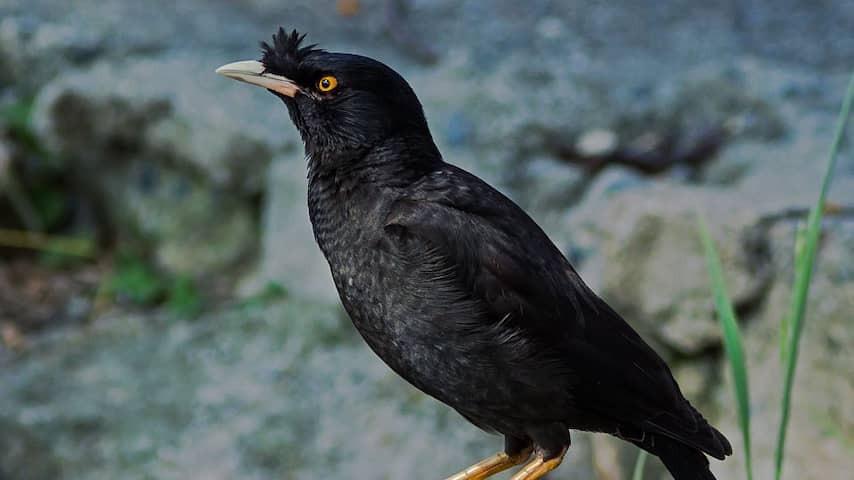
Another 26 animal and plant species have been forbidden in the European Union since Thursday. They have been added to the list of worrying invasive exotics. These species do not naturally occur in Europe and can harm nature.
The species are declared undesirable because they can have a negative effect on biodiversity. For example, they eat indigenous species or transfer new diseases. In addition, there will be “competition for space, food, light and nesting opportunities,” reports the Dutch Food and Consumer Product Safety Authority (NVWA).
In the EU it is forbidden to possess, trade, breed or breed, transport and import these animals and plants. In addition, it must be prevented that these species reproduce.
It concerns eighteen animal species, including the TintMina (see main photo), the Chinese marsh snail and the Asian mud crawler. People who already have such an animal can keep it. If someone can no longer take care of it, then he can give the animal away. Selling and expanding is forbidden.
Of the eight plant species, four have already established themselves in the Netherlands: the Japanese knotweed and the Watercrassula. Is one of these plants in your garden or pond? Then you can keep it, but only if you prevent it from multiplying. Throw the plants away in the waste bin, not in the green bowl or on a compost heap.
Traders can sell their stock one year after the prohibition. For the American Nerts and Canadian Bever, the rules go into two years later.
Invasive exotics end up in the EU due to human actions. This is due to the trade in ornamental plants and pets. But the animals can also be included with transports.
Another 26 Animal and Plant Species Have Been Banned in the European Union Since Thorsday. They have leg added to the list of worrying invasive exotic species. These species are not native to Europe and can harm nature.
The species have leg declared undirible because they can have a negative effect on biodiversity. For example, they eat native species or transmit new diseases. In Addition, there is “Competition for Space, Food, Light and Nesting Opportunities,” Reports The Netherlands Food and Consumer Product Safety Authority (NVWA).
In the EU, IT is Forbidden to Possess, Trade, Breed or Cultivate, Transport and Import Thesis Animals and Plants. In Addition, it must be prevention that these species reproduce.
It Concerns Eighten Animal Species, Including The Crested Myna (See Main Photo), The Chinese Swamp Snail and the Asian Weatherfish. People who already have such an animal may keep it. If some can no longer take care of it, they may give the animal away. Selling and Releasing is Prohibited.
Of the Eight Plant Species, Four already Already Established Themselves in The Netherlands: Japanese Knotweed and Water Crassula. Is one of these plants in your garden or pound? Then you can keep it, but only if you prevent it from multiplyping. Throw the plants away in the garbage bin, not in the green bin or on a compost heap.
Traders May Sell Their Stock for one year after the Ban Takes Effect. For the American Mink and Canadian Beaver, The Rules Will Take Effect Two Years later.
Invasive exotic species end up in the EU through Human Actions. This is due, for example, to the trade in ornamental plants and pets. But the animals may also have hitched a ride with transports.